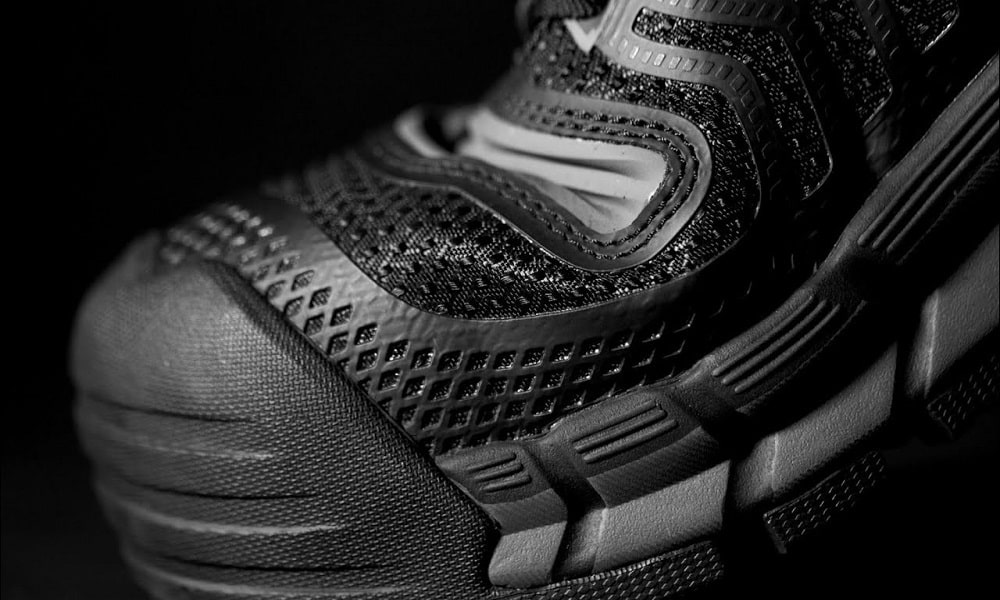When your work boots don’t support you, everything from your back to your focus takes a hit. Long shifts on hard surfaces, wet worksites, and unpredictable terrain make one thing clear: the wrong boots slow workers down and put them at risk. But the right pair? It can power up productivity and help prevent costly injuries. Equipping your workforce with the right work boot design can enhance both safety and productivity on the job.
Subpar Work Boots Come at a Cost
Not all boots are built for hard days. Without adequate support, protection, or slip resistance, workers start to feel the toll, physically and mentally. Fatigue sets in faster. Reaction times are slow. Morale dips. Foot pain and minor injuries from subpar footwear are common causes of callouts and early clock-outs. These small disruptions ripple across projects, delaying timelines and driving up costs. Choosing the right boots reduces that strain, allowing workers to stay energized and focused throughout their shift.
Better Design, Better Performance
Well-made work boots offer more than just a steel toe. They’re engineered for comfort, stability, and long-haul durability. Features like arch support, shock-absorbing midsoles, and breathable linings work together to minimize muscle fatigue and overheating. Workers in warehouses, shops, or job sites who switch to ergonomically designed boots often notice the difference within days: reduced soreness, increased focus, and a smoother workflow from start to finish.
Built-In Worker Safety that Prevents Downtime
Slip-resistant soles. Composite toe caps. EH-rated protection. These aren’t just nice-to-haves; they’re essential for reducing accidents and staying OSHA-compliant. Jobs in construction, electrical, and manufacturing demand gear that performs under pressure. When boots don’t grip or shield correctly, the risks escalate. But with the right protection built in, crews work faster, smarter, and more confidently, especially in adverse conditions.
Confidence from the Ground Up
Productivity doesn’t begin with tools or timelines; it starts with the worker’s body. And nothing connects the body to a jobsite like boots. When the fit is wrong, too tight, too loose, or lacking support, every step becomes a strain.
A properly fitted boot improves gait, posture, and alignment. This reduces joint stress and helps prevent long-term musculoskeletal injuries. Over time, that alignment translates to more consistent energy and less wear and tear on the body. The result? Fewer sick days, fewer slowdowns, and crews that finish strong. It’s why professional athletes obsess over footwear, and why the same principle applies to industrial athletes, too.
Smart Investment in Quality Work Boots, Real Returns
Cutting corners on gear might save dollars today, but cost you hours tomorrow. From reduced injuries to stronger shift performance, investing in better boots pays back in less downtime, fewer medical visits, and greater retention. Many forepersons and team leads have seen measurable gains in morale and efficiency after outfitting teams with high-quality footwear. It’s not just a feel-good move; it’s a smart business decision.
Long-Term Health Outcomes and Worker Retention
One of the most overlooked benefits of proper footwear is its long-term impact on worker health. Chronic foot pain, lower back issues, and joint deterioration are common among labor-intensive workers, and many of these conditions stem from years of inadequate support. When boots fail to provide proper shock absorption or arch support, stress accumulates, leading to repetitive strain injuries that prematurely force talented workers off the job.
Organizations that take proactive steps to prevent these injuries, starting with high-quality footwear, often see improved retention rates. Employees who feel physically supported are more likely to stay, especially when they recognize that their employer is investing in their health and safety. That sense of support builds loyalty, improves morale, and fosters a positive workplace culture, where people are more likely to show up, stay longer, and perform better.
Industry-Specific Considerations
Every industry has its own footwear demands. In agriculture and forestry, waterproofing and puncture-resistant soles are critical for navigating wet, uneven terrain. In manufacturing and logistics, anti-fatigue insoles and slip resistance are key for enduring long hours on concrete floors. For electricians and utility workers, EH-rated boots that prevent electrical hazards can be life-saving.
Recognizing these needs and outfitting employees with task-specific boots can reduce incidents, streamline workflows, and reinforce a safety-first mindset across the board. It also ensures compliance with regulatory bodies, such as OSHA, which can help avoid costly fines or legal challenges down the line.
Closing the Gap Between Comfort and Compliance
In the past, safety boots had a reputation for being stiff and uncomfortable. However, modern innovations have bridged the gap, enabling manufacturers to create boots that meet stringent safety standards while still maintaining comfort. Lightweight composite toes, breathable waterproof membranes, and flexible soles have become the norm in high-end work boots, making it easier than ever for workers to stay safe and feel comfortable while doing their job.
When companies prioritize these features in their gear policies, they’re showing leadership. Comfortable workers are more engaged, more efficient, and more likely to speak up about potential hazards. That feedback loop contributes to continuous improvement and a healthier, more productive workplace.
Proper footwear protects, supports, and powers workers through every step, helping your crew stay productive, safe, and steady no matter the task. Discover dependable work boots for sale at Overlook Boots, designed for optimal performance and protection.


